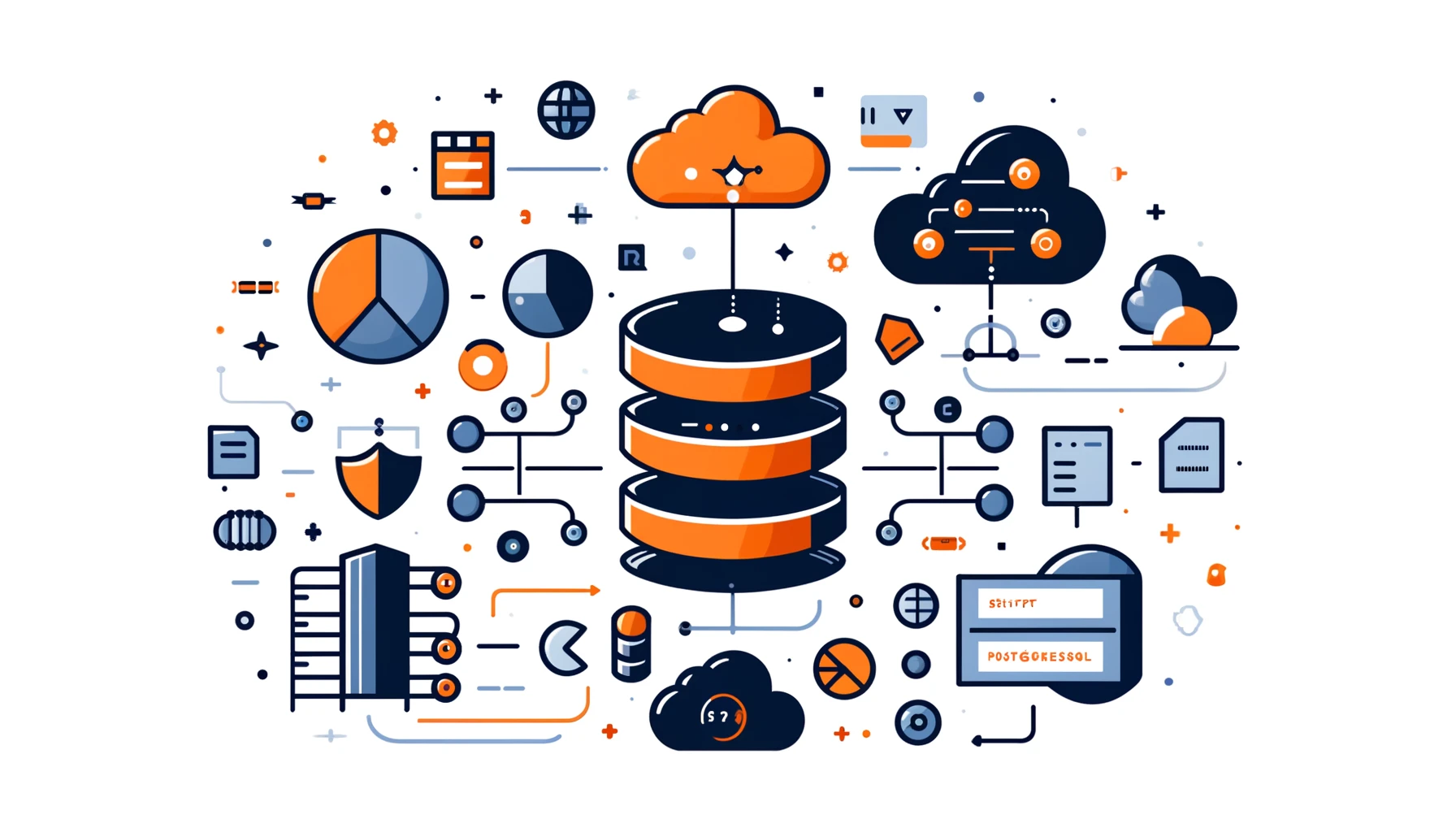
Redshift and PostgreSQL

Introduction
When choosing a database for your application or data warehouse, two popular options are Amazon Redshift and PostgreSQL. Both are powerful, feature-rich databases but they have some key differences. In this article, we will compare Redshift and PostgreSQL, looking at their security features, typical uses, and database drivers. By the end, you’ll have a clearer understanding of which database may be the best fit for your needs.
What is Amazon Redshift?
Amazon Redshift is a fully managed, petabyte-scale data warehouse service in the cloud. It performs complex queries on massive datasets, using a columnar storage approach and parallel processing architecture. Some key features of Redshift include:
- Columnar storage for improved query performance on analytical workloads
- Massively parallel processing (MPP) architecture that automatically distributes queries across multiple nodes
- Integration with various data loading tools like Amazon S3 and Amazon Kinesis
- Encrypted data transfer and storage for enhanced security
Redshift is based on PostgreSQL, but it has been optimized and enhanced for data warehousing and business intelligence tasks.
What is PostgreSQL?
PostgreSQL is a powerful, open source object-relational database system. It has earned a strong reputation for reliability, feature robustness, and performance. PostgreSQL is a versatile database that can handle different types of workloads, from small applications to large enterprise systems. Some standout features of PostgreSQL include:
- Support for advanced data types like arrays, hstore, and JSON
- Extensive indexing capabilities, including partial, expression, and full-text indexes
- Powerful query optimizer and support for parallel queries
- Write Ahead Logging (WAL) for point-in-time recovery and replication
- Highly extensible through stored procedures, extensions, and plugins
The PostgreSQL community has actively developed the software for over 30 years and continues to contribute to its ongoing improvement.
Security Comparison
Both Redshift and PostgreSQL take database access and security measures seriously and provide several features to protect your data. Let’s look at how they compare:
Redshift Security:
- Encrypted data transfer using SSL
- Encryption for data at rest using AES-256
- Support for Amazon VPC to isolate clusters in a private network
- Integrates with AWS CloudTrail to log and monitor API calls
- Granular access control using AWS IAM policies
Example of encrypting a column in Redshift:
CREATE TABLE users ( id INT, name VARCHAR(255), email VARCHAR(255) ENCODE lzo );
PostgreSQL Security:
- Supports SSL for encrypting client/server communications
- Provides column and data-type level encryption via pgcrypto extension
- Offers a variety of authentication methods (password, GSSAPI, SSPI, etc)
- Granular access control using roles and privileges
- Extensive logging and auditing capabilities
Example of creating an encrypted column in PostgreSQL:
CREATE EXTENSION pgcrypto; CREATE TABLE users ( id SERIAL PRIMARY KEY, name TEXT, email TEXT, password TEXT ENCRYPTED WITH (COLUMN_ENCRYPTION_KEY = 'cek_1', ENCRYPTION_TYPE = 'deterministic') );
Both databases provide solid security fundamentals. Redshift benefits from the wider AWS ecosystem and tight integration with IAM. PostgreSQL has more granular encryption options and a wider range of authentication methods.
Common Use Cases
Redshift and PostgreSQL have some overlap, but they are optimized for different use cases.
Redshift is ideal for:
- Data warehousing and analytics on large datasets (100s of GB to PBs)
- Business intelligence and reporting where fast query performance is critical
- ETL workloads that consolidate data from multiple sources
- Scenarios where tight integration with AWS services is desired
PostgreSQL is a great fit for:
- General purpose transactional (OLTP) workloads
- Operational data stores that require ACID compliance
- Geospatial applications using PostGIS extension
- Systems requiring high extensibility and customization
- Web applications and mobile apps (often using a REST API backend)
Database Drivers
To connect application code to your database, you need a database driver. Here are the key driver options for Redshift and PostgreSQL:
Redshift JDBC Driver
The Redshift JDBC Driver helps Java apps connect to Amazon Redshift, a managed data warehouse service. This driver assists developers in connecting Redshift databases with Java applications through JDBC API versions 4.1 and 4.2. It ensures reliability and efficiency.
The Redshift JDBC Driver helps developers run SQL queries, access data, and perform database tasks in Java code easily. This driver makes it easier to connect to Redshift and ensures compatibility with the newest JDBC standards. It helps Java applications integrate smoothly and reliably with Redshift databases.
The Redshift JDBC Driver helps Java developers use Amazon Redshift in their applications. It helps them easily access and work with data stored in Redshift.
Redshift ODBC Driver
The Redshift ODBC Driver is a software that helps applications connect to Amazon Redshift, a managed data warehouse service. This driver utilizes the Open Database Connectivity (ODBC) API, which is a standard interface for accessing database management systems. The Redshift ODBC Driver helps developers connect their applications to Redshift. This allows them to perform tasks like querying, inserting, updating, and deleting data.
The Redshift ODBC Driver is compatible with ODBC 3.8, allowing smooth communication between the application and the Redshift database. Developers can fully utilize the ODBC API and its advanced features for data access and manipulation. This is possible due to the compatibility between the two.
The Redshift ODBC Driver helps connect applications to Redshift and work with data in the database easily. Developers can use this tool to create strong and scalable applications that utilize Amazon Redshift for data processing.
Redshift Python Connector
The Redshift Python Connector is a tool that enables Python applications to establish a connection with Amazon Redshift, a fully managed data warehouse service. This connector follows the DB API 2.0 specification, which is a standard interface for accessing relational databases in Python.
This connector helps developers work with Redshift databases in Python, running SQL queries and getting data for their applications. Python and Redshift are a great combination for data processing and analysis. This makes them a valuable tool for businesses and organizations. They can use Redshift for their data analytics.
Example of connecting to Redshift using Python:
Install the package:
pip install redshift_connector
The code may look as follows:
import redshift_connector conn = redshift_connector.connect( host='redshift-cluster-1.abc123xyz789.us-west-2.redshift.amazonaws.com', database='dev', user='awsuser', password='my_password' )
PostgreSQL Drivers:
- JDBC: The official PostgreSQL JDBC driver provides support for Java applications. Implements JDBC 4.2 API.
- ODBC: The PostgreSQL ODBC driver allows applications to interface with PostgreSQL databases using the ODBC API.
- Npgsql: The open source .NET data provider for PostgreSQL. Supports ADO.NET and Microsoft’s Entity Framework.
- libpq: The native C library for connecting to PostgreSQL. Many other language-specific drivers build on top of libpq.
Example of connecting to PostgreSQL using Python and psycopg2:
Install the package:
pip install psycopg2
The code may look as follows:
import psycopg2 conn = psycopg2.connect( host="localhost", database="mydb", user="postgres", password="secret" )
Both databases have a healthy ecosystem of drivers across popular programming languages. Choosing a driver often comes down to your application’s language and framework.
Summary and Conclusion
In this article, we compared Amazon Redshift and PostgreSQL, two powerful but distinct databases. We looked at their core features, security capabilities, ideal use cases, and available database drivers.
To summarize:
- Redshift is a fully managed data warehouse optimized for fast analytics on large datasets. It integrates closely with AWS services.
- PostgreSQL is a versatile open source database known for its reliability, feature-richness, and extensibility. It excels at OLTP and general-purpose workloads.
- Both databases provide solid security through encryption, access control, and logging. The right choice depends on your specific requirements.
When it comes to simplifying database security, masking, and compliance, solutions like DataSunrise provide user-friendly and flexible tools. Their products have features such as real-time activity monitoring, dynamic data masking, and continuous auditing. These features are all managed through an easy-to-use interface.
If you’re interested in learning more about DataSunrise’s database security offerings for Redshift, PostgreSQL, and other databases, our team would be happy to give you an online demo. Visit our website to schedule a demo or sign up for a free trial.
